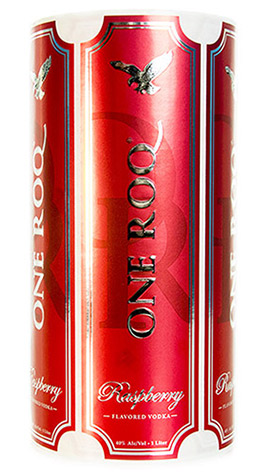
Embossed labels are an effective way to achieve a premium packaging look since they not only add visual interest, but a unique tactile quality. The embossing process, however, requires capabilities and resources that can put this option out of reach for smaller label buyers. In this article, we’ll explain what you should know about embossed labels so you can move forward with your custom labels with confidence.
What Are Embossed Labels?
The term “embossed” refers to the technique of creating a raised pattern on a material. When embossing labels, the material is typically foil paper because of how well it holds the embossed image. Films are difficult to emboss because they have a shape memory, so the embossed image will disappear as the film returns to its original state of flatness. Embossing is often used as a decoration to call attention to a design element, like a logo, to enhance the perceived quality of a brand or product. Another term you may have heard is “debossed” which is the opposite effect of an indented pattern.
Embossed labels have a luxurious look and feel that pairs perfectly with gourmet and high end product lines. The process, however, adds extra steps to label printing which means the labels will cost more.

The Embossing Process
Two popular ways to mass print embossed labels is with a flexographic or offset printing press. We use flexographic presses and can emboss labels in two ways: photopolymer embossing plates or brass embossing dies. Both methods use a “female” and “male” set that work with the utmost precision, timing, and pressure to create the embossing pattern.
- Photopolymer embossing plates: Their technical name is “high-durometer photopolymer plate” which basically means that they’re much harder than flexographic printing plates, which transfer ink onto the label material and are more flexible. A set typically runs between $450-500 making them more cost-effective for smaller orders.
- Brass embossing dies: Although pricier than embossing plates, brass embossing dies are better quality and work best for large label quantities. A two-tool set runs about $1,500-2000 and typically has a longer lead time than plates.
*Please note that these prices are estimates and can vary greatly depending on specific requirements. We can provide more information once we know the details of your label project.
Cost Considerations
Before you say “Sign me up!” it’s important to know that embossed labels typically have a higher price per label. That’s because press setup takes longer, foil paper is more expensive than other types of paper, and cylinders may need to be special ordered if what we have can’t work for your project. Your price per label, however, can be offset if we print a high volume of labels, but for small quantities (10,000 labels or less) you may find it hard to justify the hefty price tag – setup can cost as much as the labels.
It’s important to note that pricing for embossed labels – like other custom products – will vary depending on label size, quantity, materials, labor, and other factors.
Finding What Works For You
Fortunately, embossing is not the only way you can add a premium quality to your custom labels. Customization options like cold foil stamping, rotary screen printing, and combining multiple finishes can add sparkle or texture to labels for a completely unique look. Let us know the details of your project so we can help you create an optimal label solution, whether that includes embossed labels or another one of our label products.


